Preparing for an Autism Assessment
Steps and Insights for Navigating an Autism Evaluation

Understanding the Assessment Journey
The journey towards an autism diagnosis can be both daunting and enlightening. For parents and caregivers, preparing for an autism assessment involves more than just showing up for the appointment. It is an involved process where gathering information, understanding the evaluation stages, and preparing both emotionally and practically are crucial. This guide aims to provide a comprehensive look at how to prepare for an autism assessment, addressing common questions and concerns while providing practical advice and support resources.
How to Efficiently Prepare for an Autism Assessment
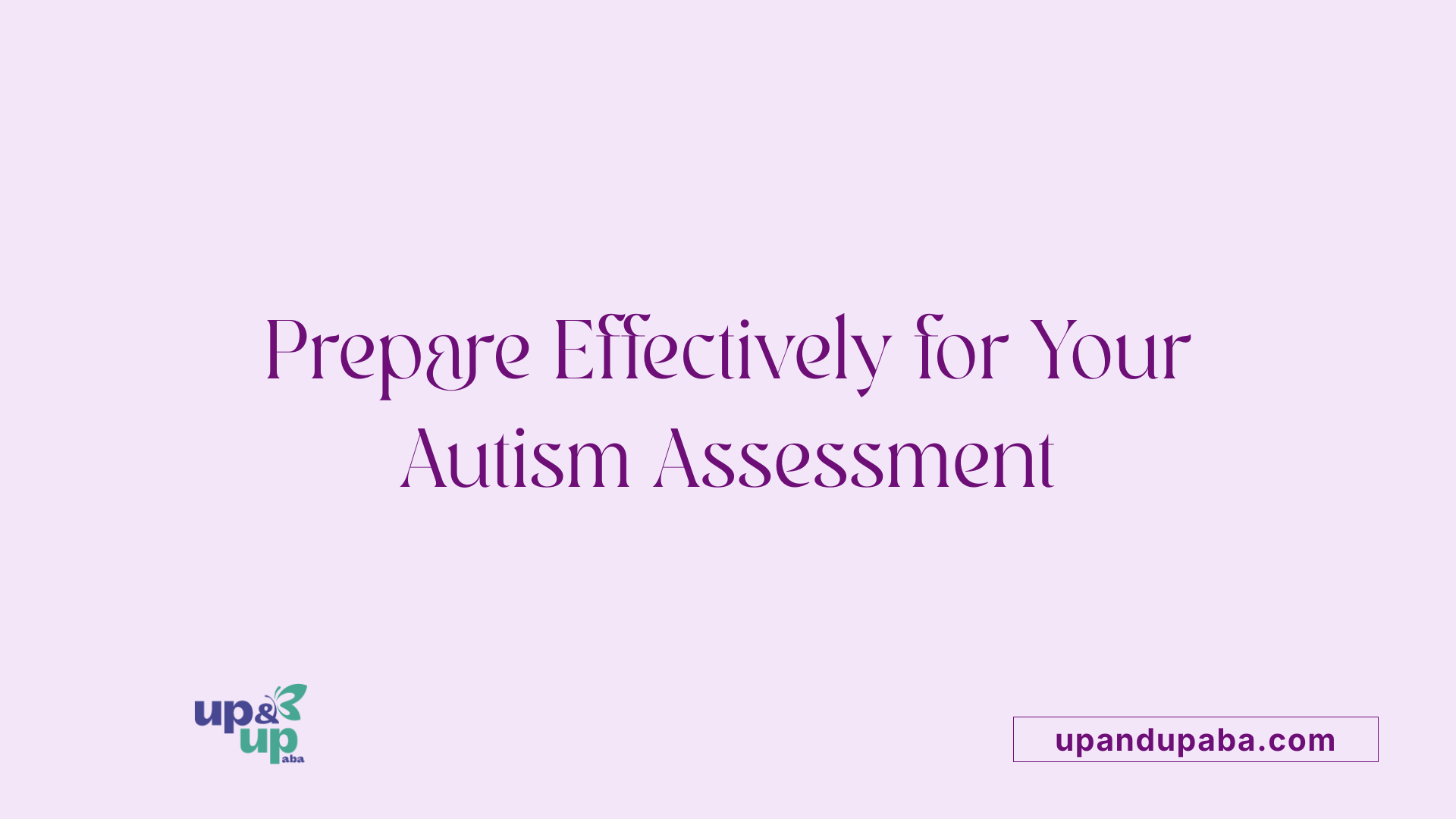
How should I prepare for an autism assessment?
To effectively prepare for an autism assessment, it’s vital to start by gathering comprehensive information about your child. Here are some steps to consider:
Documenting Child's Behaviors
- Keep a journal detailing observed behaviors, including social interactions, communication skills, and any repetitive actions.
- Note specific instances, such as struggles with eye contact or difficulties in forming friendships, and record dates and ages for context.
Gathering Medical and Educational Records
- Compile your child's medical history and any previous evaluations.
- Include notes from teachers or early childhood educators addressing developmental milestones.
- Bringing this information together in a folder will help evaluators understand your child’s unique needs better.
Understanding Diagnostic Tools
- Familiarize yourself with the common diagnostic tests such as the Autism Diagnostic Observation Schedule (ADOS) and rating scales like the Childhood Autism Rating Scale (CARS).
- Research the DSM-5 criteria for autism to reflect on specific behaviors that warrant evaluation.
Using resources like the Autism Speaks 100 Day Kit can enhance your knowledge about autism and the assessment process. Discussing the evaluation with your child may also mitigate anxiety, and having someone accompany you for support can prove beneficial. Finally, assessing potential intervention services in advance might be wise, as the evaluation could identify developmental delays that need attention.
Understanding the Diagnostic Criteria for Autism
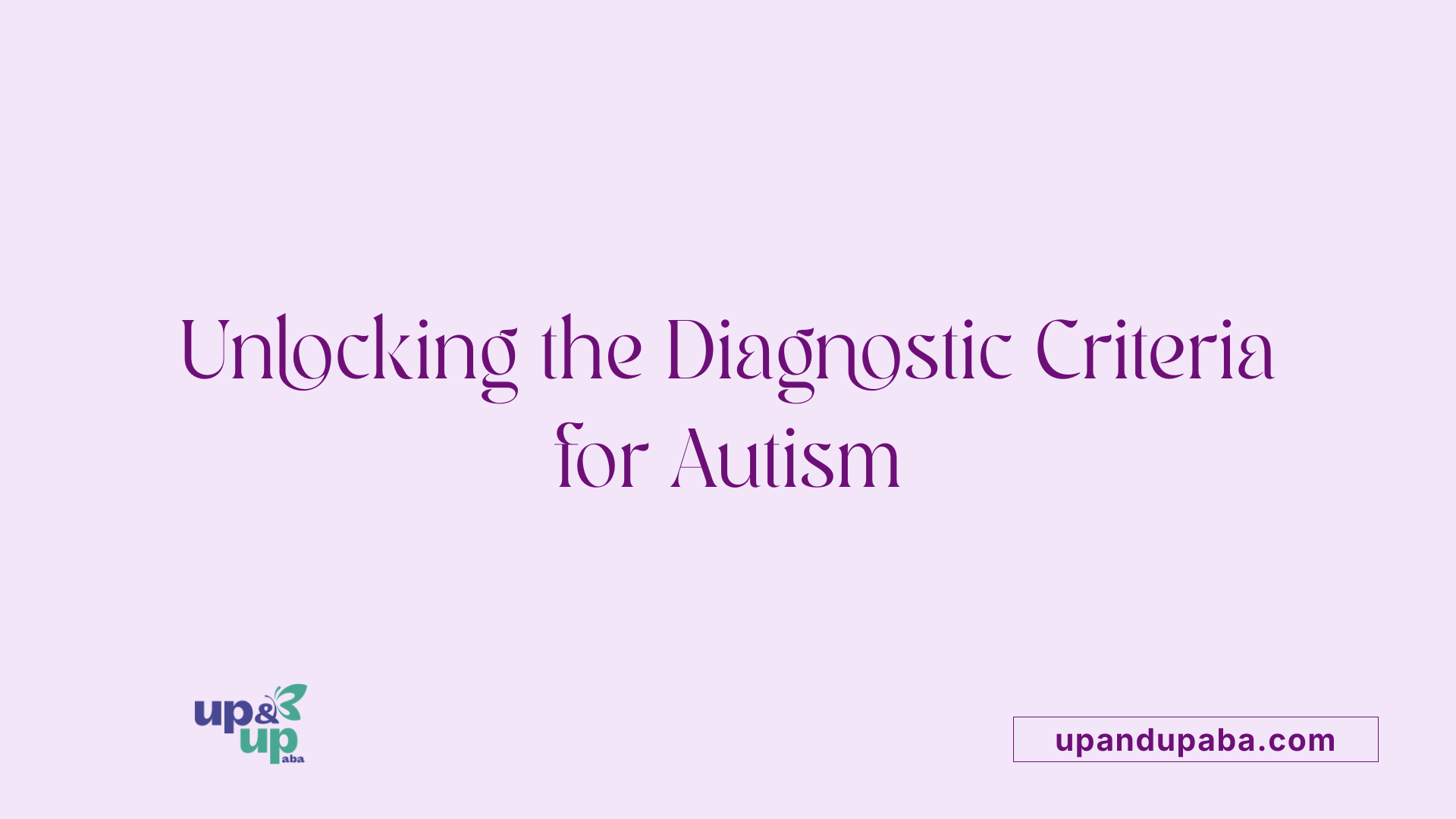
What are the diagnostic criteria for autism?
The diagnostic criteria for autism spectrum disorder (ASD) are defined in the DSM-5. These criteria mandate that individuals show persistent deficits in social communication and social interaction across multiple contexts. Specifically, clinicians look for a variety of behavioral markers, including:
- Difficulties in social-emotional reciprocity: This includes challenges in back-and-forth conversations and a lack of emotional sharing.
- Issues with nonverbal communicative behaviors: For example, individuals might struggle with eye contact or understanding facial expressions.
- Problems in relationships: This could manifest as difficulties in forming and maintaining relationships appropriate to developmental levels.
Additionally, the criteria require evidence of at least two restricted, repetitive patterns of behavior, interests, or activities. Symptoms should be apparent in early developmental stages and must cause clinically significant impairment in multiple areas of functioning, such as education or work environments.
Tools like the Modified Checklist for Autism in Toddlers, Revised (M-CHAT-R) are essential for early screening. The M-CHAT-R helps identify children who are at risk for ASD based on specific behavioral observations, prompting further evaluation when necessary. This proactive approach ensures that effective interventions can be implemented as early as possible.
The Role of Professionals in Adult Autism Diagnosis
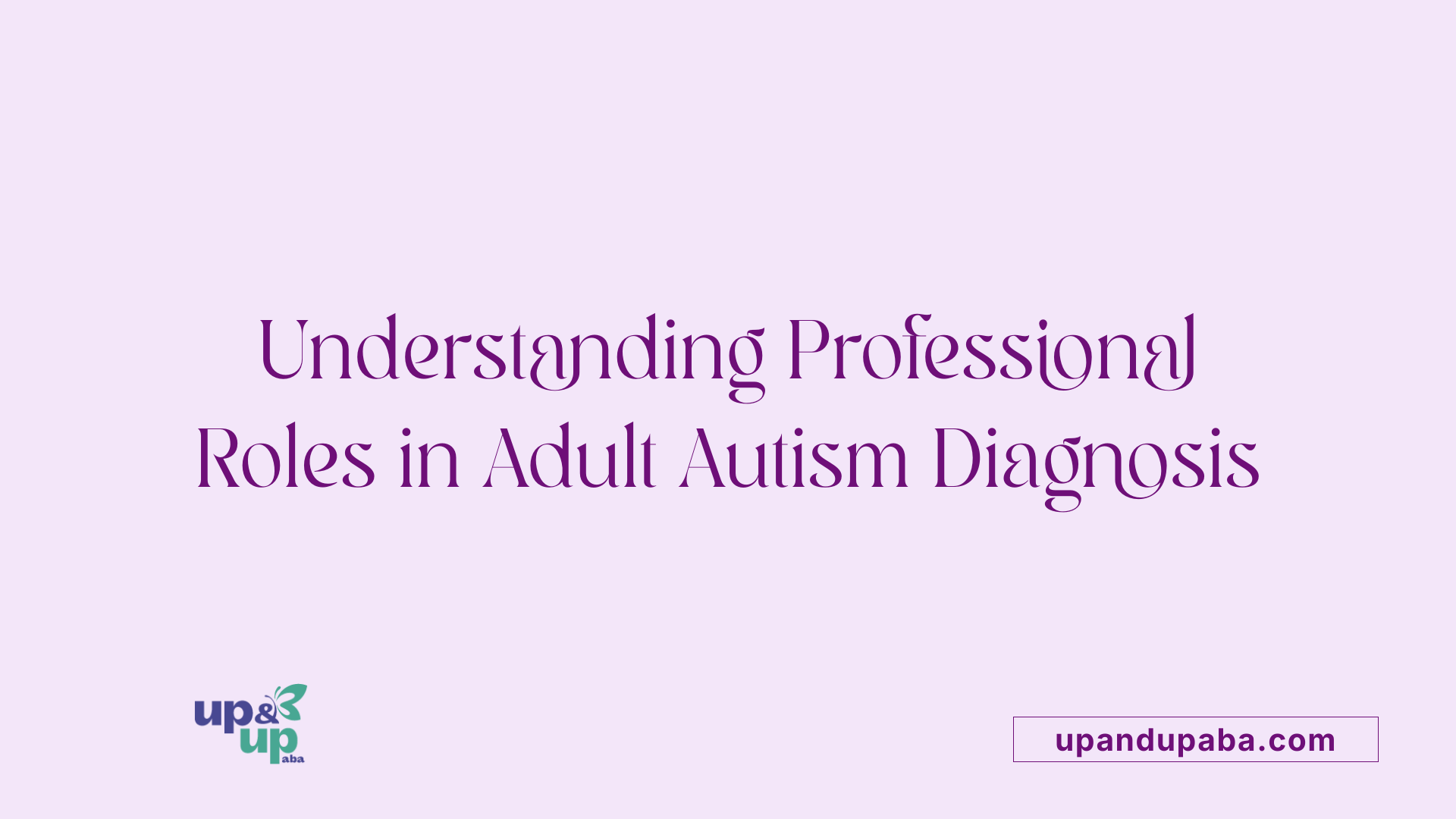
How is autism tested in adults?
Autism in adults is diagnosed by qualified professionals, including psychiatrists and psychologists, through a comprehensive evaluation process. This process begins with self-screening tools like the Autism Spectrum Quotient (AQ), which can indicate the need for further professional assessment but do not offer a formal diagnosis.
The gold standard for an autism assessment is the Autism Diagnostic Observation Schedule, Second Edition (ADOS-2), paired with other instruments like the Developmental, Dimensional, and Diagnostic Interview-Adult Version (3Di-Adult). These tools focus on evaluating behavioral patterns, communication difficulties, and emotional responses while incorporating the individual's developmental history.
It is crucial for individuals seeking a diagnosis to consult with specialists who have expertise in adult autism. Symptoms often overlap with other conditions, making it essential that evaluators possess a deep understanding of adult presentations of autism. Without this expertise, there is a risk of misdiagnosis or overlooking relevant traits.
Importance of specialist knowledge
Engaging a professional who specializes in adult autism is vital. Here’s why:
- Accurate Diagnosis: Specialists are trained to recognize the nuances of autism in adults, which can be subtle and easily confused with other mental health issues.
- Comprehensive Assessments: They conduct multi-step evaluations that may include interviews with family, previous diagnoses, and standardized assessments tailored for adults.
- Tailored Recommendations: Following diagnosis, specialists can provide appropriate recommendations for support, accommodations, and resources.
Overall, having an experienced professional leads to a more informed and supportive diagnostic journey, ensuring that individuals gain a clearer understanding of their needs and the resources available to them.
What to Expect During the Autism Assessment Process
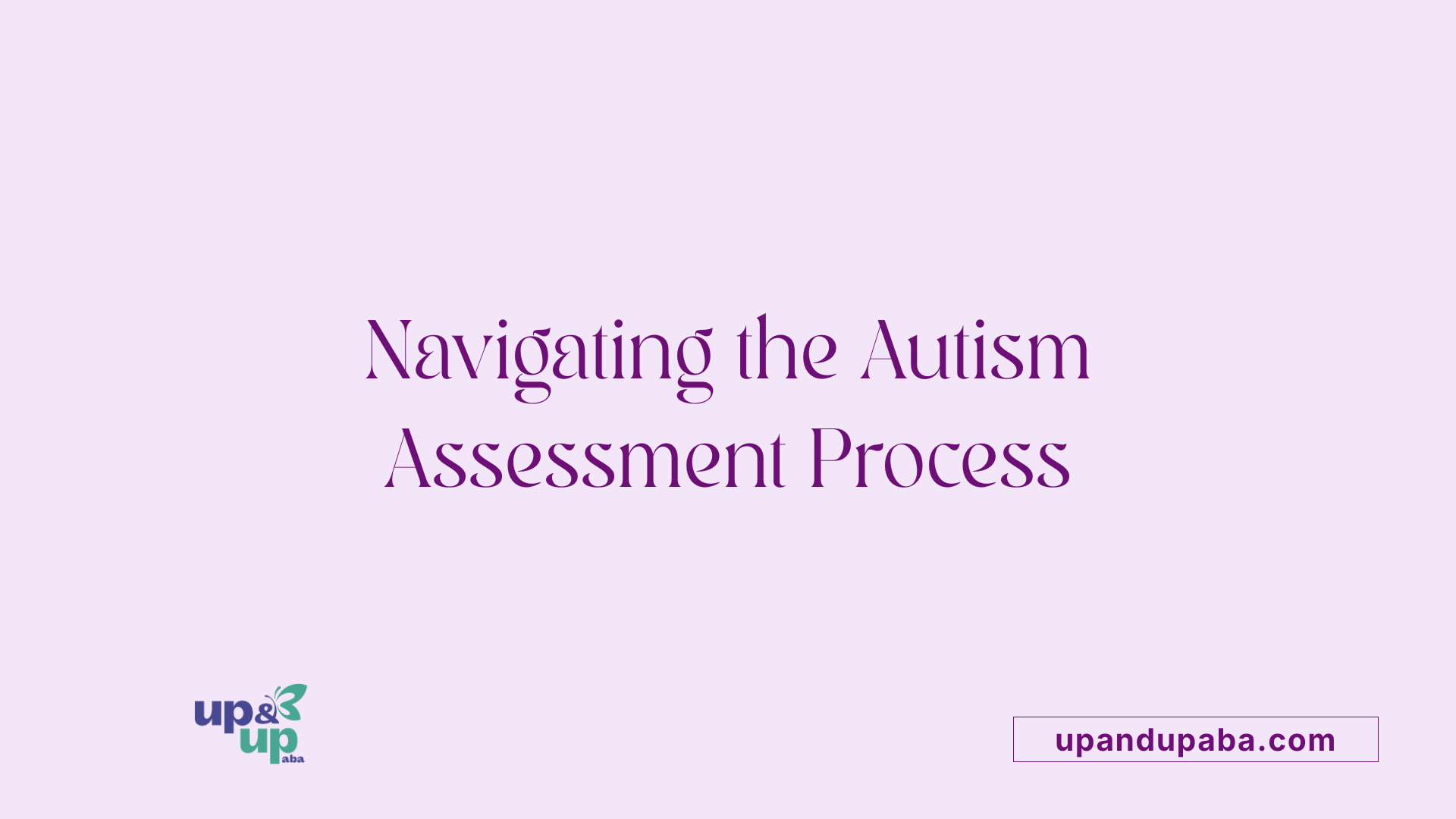
What do professionals ask during an autism assessment?
During an autism assessment, professionals ask a variety of questions aimed at gaining a comprehensive understanding of the individual's life. This inquiry typically covers aspects such as:
- Social interactions: How does the individual engage with peers and adults?
- Interests: What activities does the individual enjoy or show fixation on?
- Sensory sensitivities: Are there sensory experiences that the individual finds overwhelming or particularly engaging?
- Adherence to routines: Does the individual prefer structured activities over spontaneous ones?
- Developmental challenges: What developmental milestones have been achieved, and what challenges remain?
The assessment team, comprising specialists and a case coordinator, also values insights from family members. These insights help evaluate the person's strengths and difficulties in a holistic manner.
Observation and diagnostic tests
In addition to gathering information through interviews, the assessment process often includes direct observation and standardized diagnostic tests such as the Autism Diagnostic Observation Schedule (ADOS). During these tests, clinicians may:
- Engage the individual in play-based activities to assess social and communication skills.
- Utilize structured questionnaires to evaluate autistic traits in various contexts.
- Conduct cognitive assessments to gather additional context about thinking processes.
Family involvement
Family involvement is crucial in the assessment process. Parents or guardians are typically encouraged to participate in interviews, providing essential information about the individual's developmental history. This collaboration helps ensure that all aspects of the child's behavior and experiences are thoroughly understood.
After the assessment, families can expect to receive a detailed written report clarifying if the individual is autistic and outlining available support options. This collaborative approach fosters a well-informed and supportive experience for everyone involved.
The Potential Impact of Receiving an Autism Diagnosis
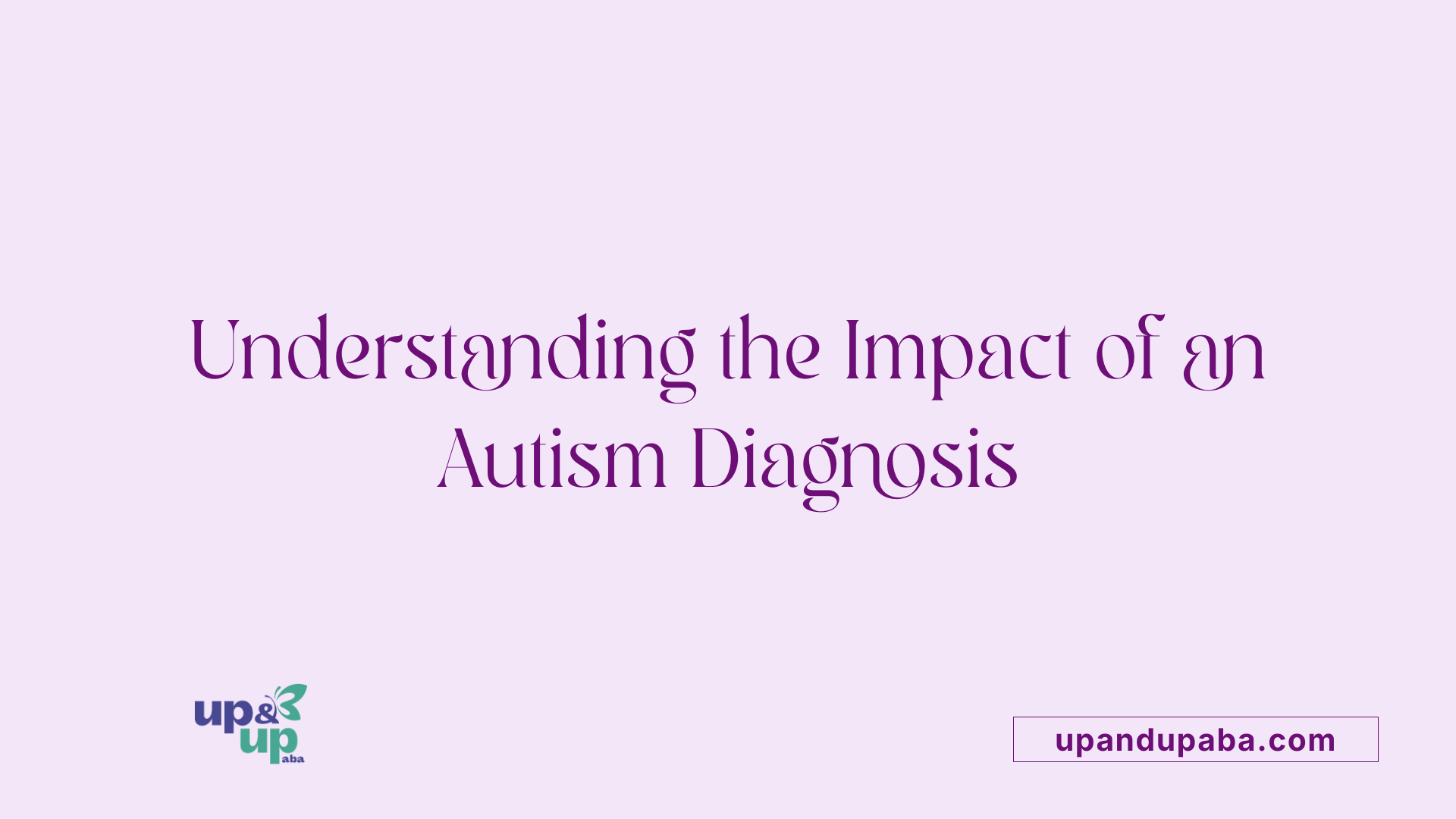
What can an autism diagnosis do for parents?
Receiving an autism diagnosis can open several doors for parents and families. Primarily, it provides access to therapies through private insurance and helps secure educational supports from local school districts. This access is crucial for addressing the child's specific developmental needs.
For many families, an autism diagnosis can offer a sense of validation and relief. It assists parents in understanding their child better and mapping out appropriate interventions. However, it’s important to acknowledge that some may experience initial shock, grief, or guilt upon receiving the diagnosis, complicating their emotional journey.
Navigating these feelings is essential. Resistance to the diagnosis can ultimately delay access to necessary interventions, emphasizing the need for acceptance. By embracing the diagnosis, parents can take proactive measures, such as:
- Seeking therapies and interventions
- Educating themselves about autism spectrum disorder (ASD)
- Advocating for their child's inclusion in various settings
The overall emotional and practical implications of receiving the diagnosis can profoundly impact the family dynamics. Acceptance leads to stronger advocacy for the needs of the child, resulting in enhanced support systems that ultimately improve the quality of life for both autistic children and their families.
Insights into the Milder Form of Autism
What is the mildest form of autism?
Level 1 autism is considered the mildest type of Autism Spectrum Disorder (ASD), characterized by less severe symptoms and a reduced need for support compared to levels 2 and 3. Individuals with Level 1 autism may have good communication skills but often struggle with social interactions, such as reading social cues and engaging in reciprocal conversations.
Previously referred to as Asperger's syndrome or high-functioning autism, Level 1 autism highlights the specific challenges faced mainly in social communication. Individuals may encounter difficulties with nonverbal communication and hypersensitivities to sensory stimuli, leading to challenges in various environments.
Challenges and support strategies
Common challenges include transitioning between activities, which can lead to anxiety or frustration. While there is no cure for autism, early intervention plays a crucial role in improving the quality of life for those with Level 1 autism. Strategies that may assist include tailored support programs, skill development activities focusing on social cues, and stress reduction techniques to help manage sensory sensitivities.
Using a structured environment and visual supports can enhance communication and help individuals navigate social situations more effectively. Encouragement and understanding from family, friends, and educators can foster confidence and increase the ability to engage within their communities.
Navigating the Path to a Comprehensive Assessment
Preparing for an autism assessment involves comprehensive preparation, understanding, and planning. By gathering relevant information, engaging with the evaluation process calmly and openly, and utilizing available resources, parents and individuals can significantly enhance the likelihood of a constructive assessment experience. Remember, the main aim of the assessment is to grasp a complete understanding of the individual's strengths and challenges, ultimately improving the quality of life and support received. Seek out continuous learning and growth opportunities to empower yourself and your loved one on this journey. Engaging with support networks and advocating for the necessary services post-diagnosis are invaluable steps as you progress beyond the assessment phase.
References
- How to Prepare for an Autism Evaluation - Empower Behavioral Health
- Five things to do while waiting for an autism evaluation
- How to get an autism assessment - NHS
- How to prepare for autism assessment | Oxford CBT
- For Autistic Adults: Adult ASD Diagnosis - AutismAndHealth.org
- Autism diagnosis: what to expect | Raising Children Network
- Preparing for Adult Assessment - Autism BC
- What Should an Evaluation for Autism Look Like? - Child Mind Institute
- Autism Checklist: How to Prepare for Your First Diagnostic Evaluation
- How to Prepare Your Child for an Autism Evaluation



